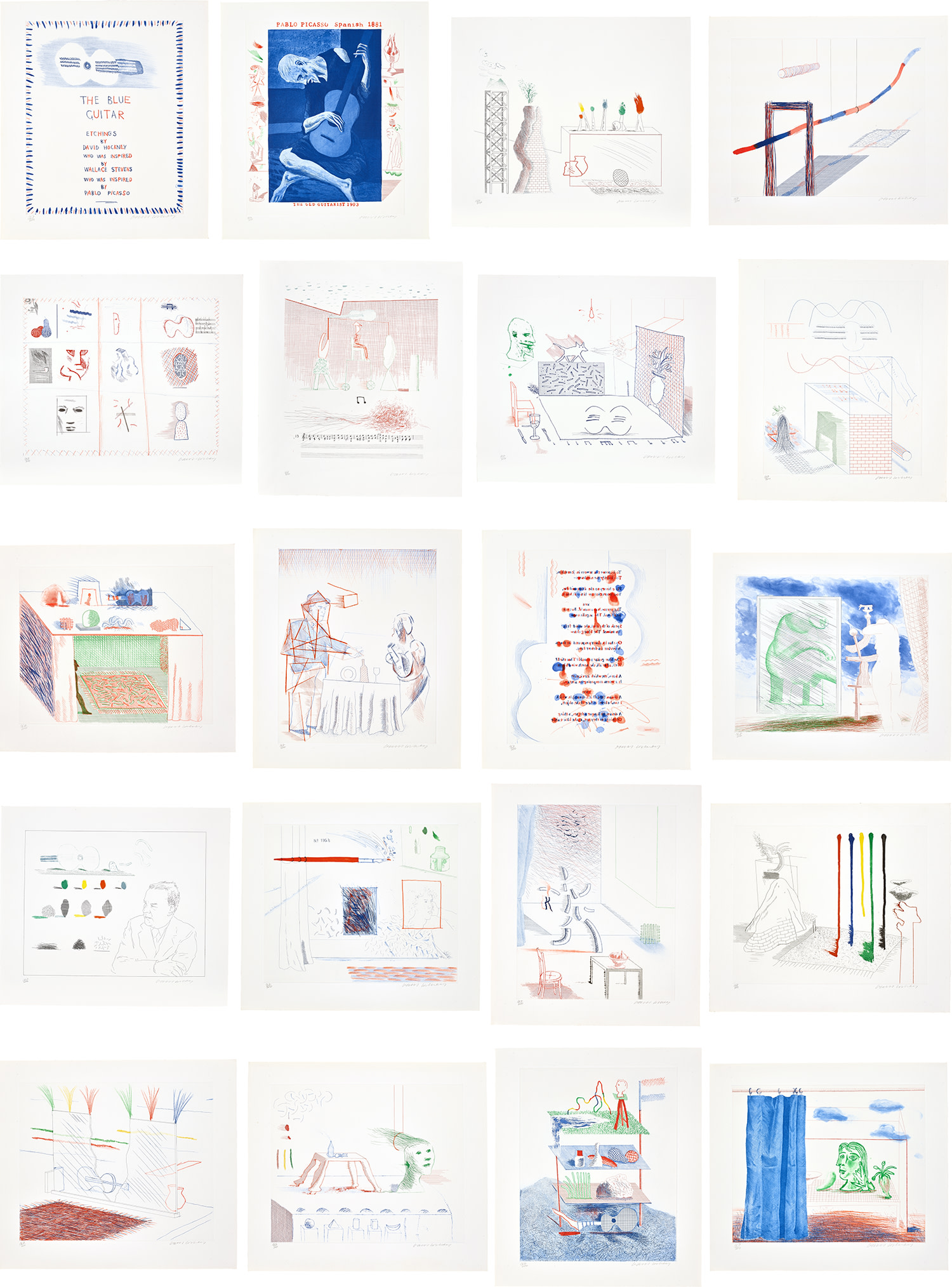

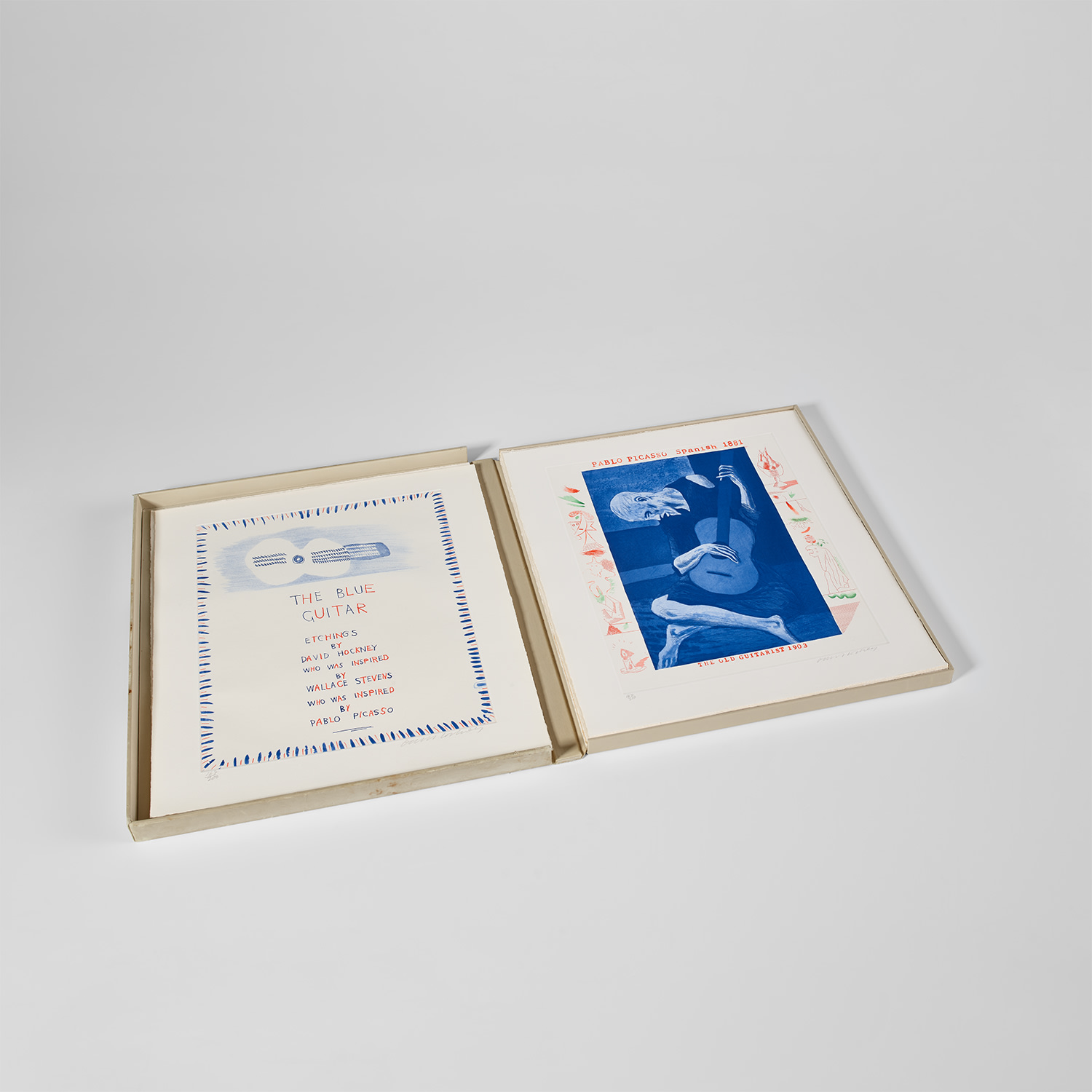
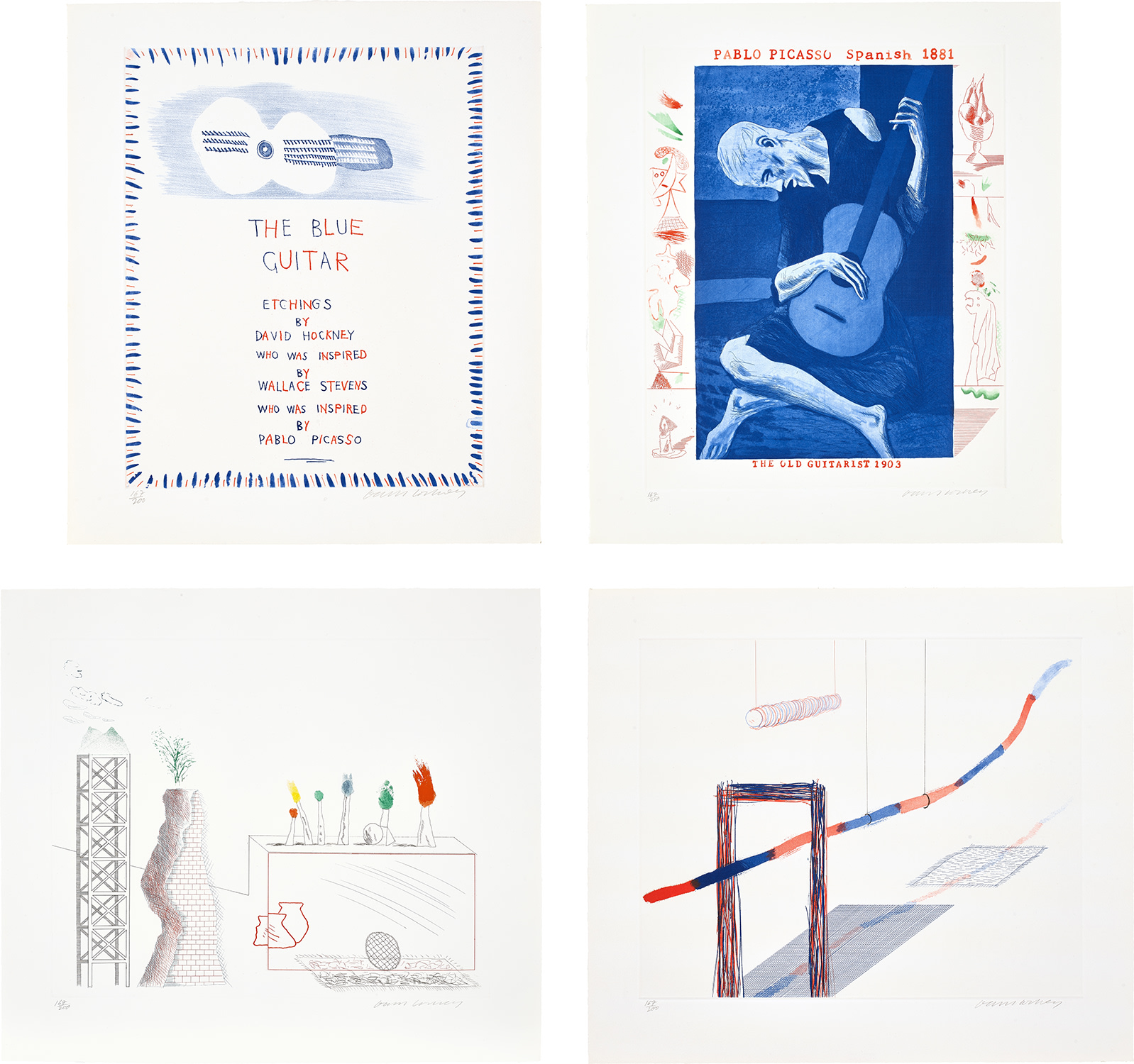

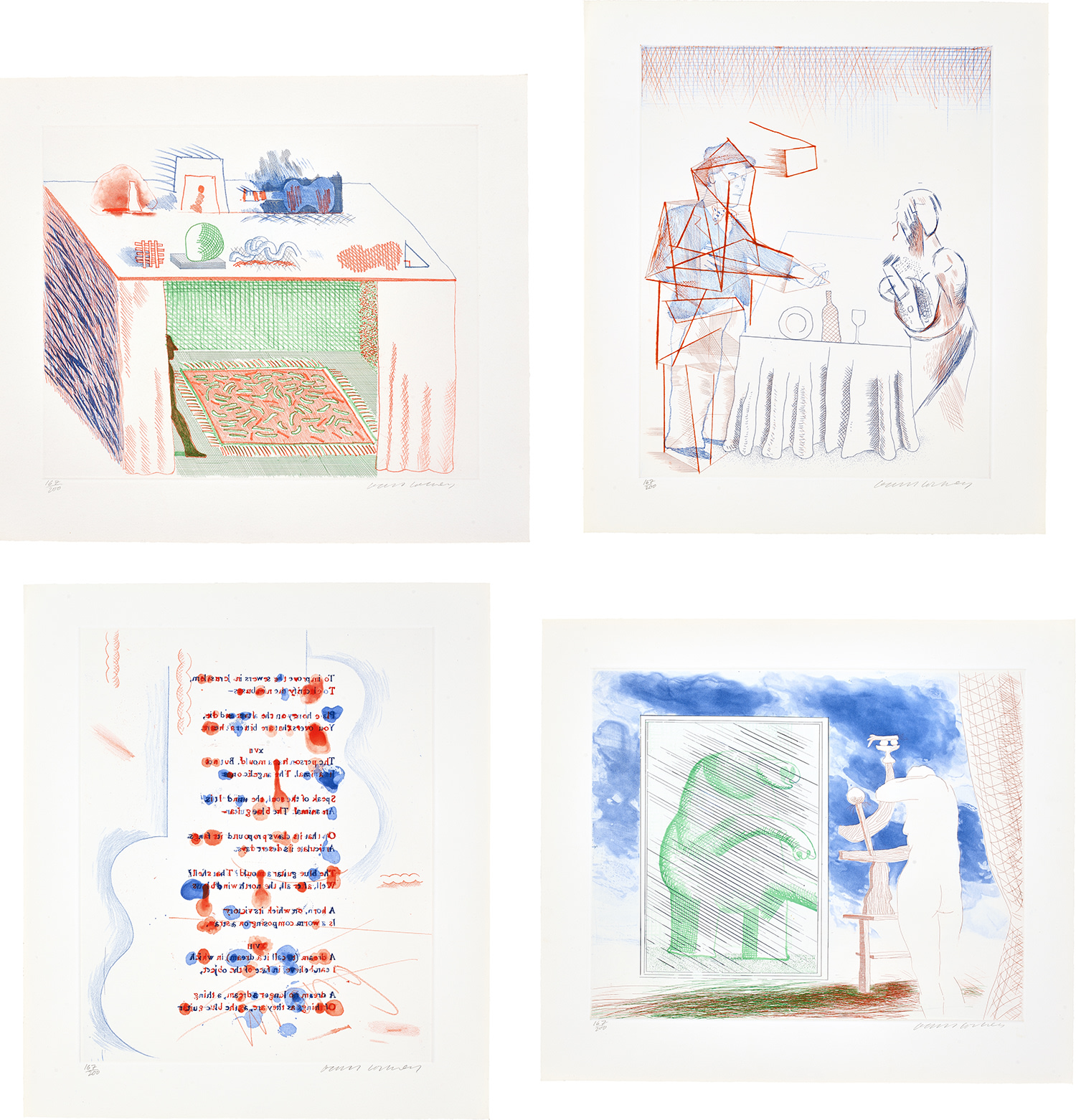
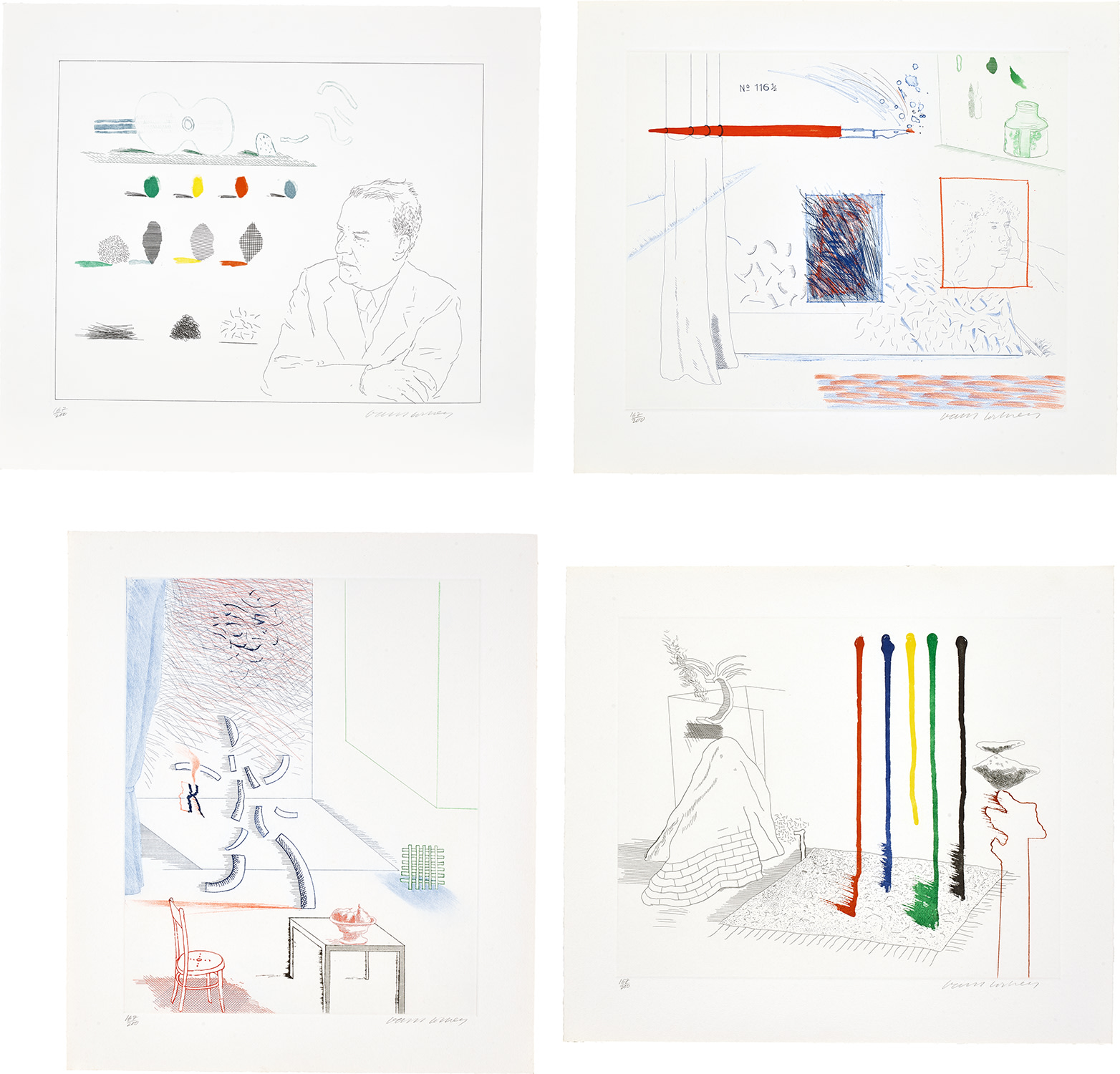
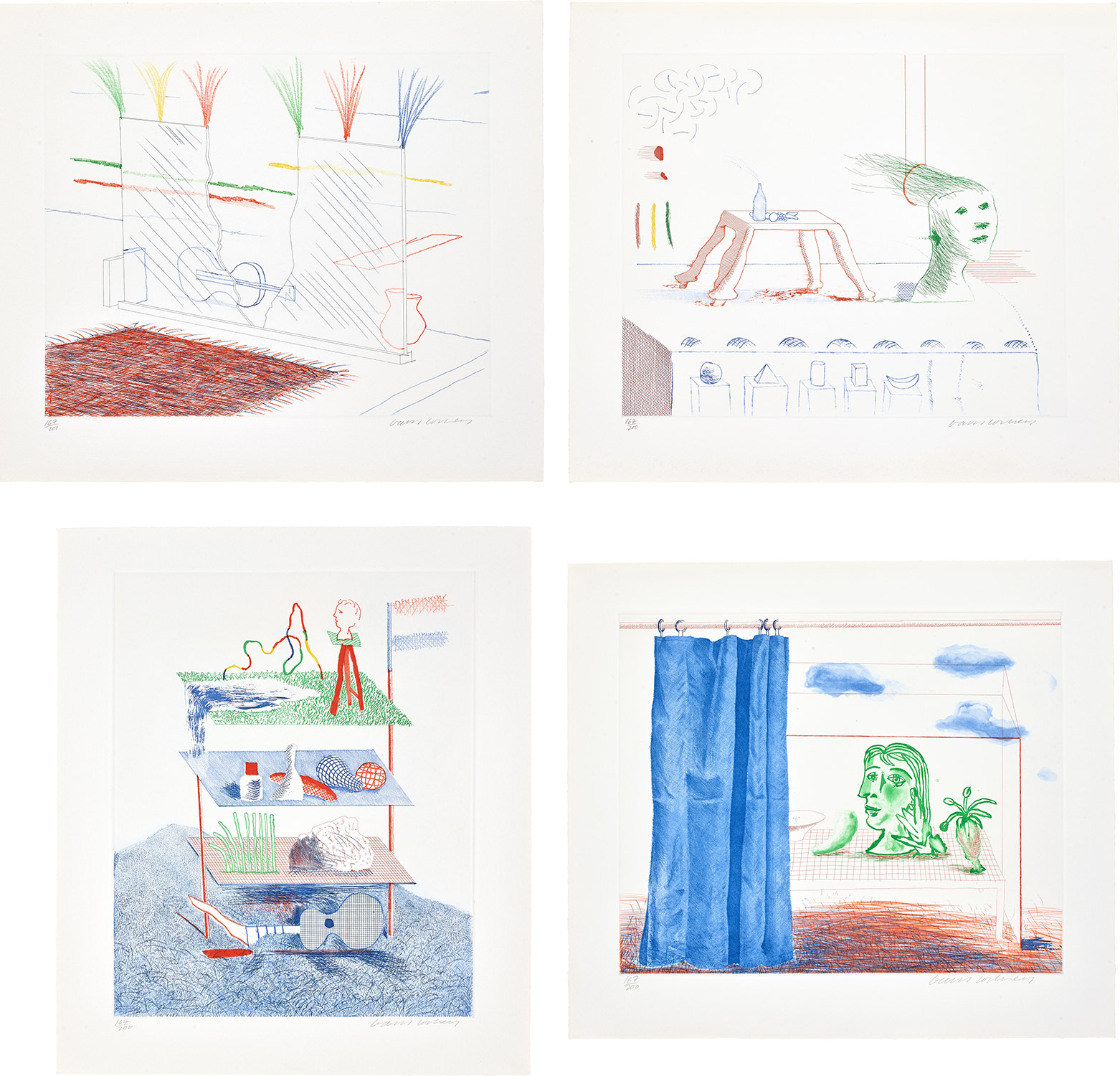








Property from a Private Belgian Collector
16
David Hockney
The Blue Guitar (S.A.C. 199-218, M.C.A.T 178-197)
The complete set of 20 etching and aquatints in colours, on Inveresk mould-made paper, with full margins, with table of contents and colophon, the sheets loose (as issued) all contained in the original beige leather-covered portfolio with embossed title.
all I. approx. 34.5 x 42.4 cm (13 5/8 x 16 3/4 in.)
all S. approx. 45.8 x 52.6 cm (18 x 20 3/4 in.), eight vertical
portfolio 55.5 x 48.3 x 4 cm (21 7/8 x 19 x 1 5/8 in.)
all S. approx. 45.8 x 52.6 cm (18 x 20 3/4 in.), eight vertical
portfolio 55.5 x 48.3 x 4 cm (21 7/8 x 19 x 1 5/8 in.)
All signed and numbered 167/200 in pencil (there were also 35 artist's proofs in Roman numerals), published by Petersburg Press, London and New York, all unframed.
Further Details
Full-Cataloguing
David Hockney
BritishDavid Hockney (b. 1937) is one of the most well-known and celebrated artists of the 20th and 21st centuries. He works across many mediums, including painting, collage, and more recently digitally, by creating print series on iPads. His works show semi-abstract representations of domestic life, human relationships, floral, fauna, and thechanging of seasons.
Hockney has exhibited at the Museum of Modern Art in New York, the Royal Academy of Arts in London, and the Van Gogh Museum in Amsterdam, among many other institutions. On the secondary market, his work has sold for more than $90 million.